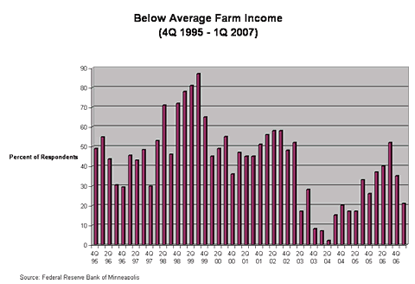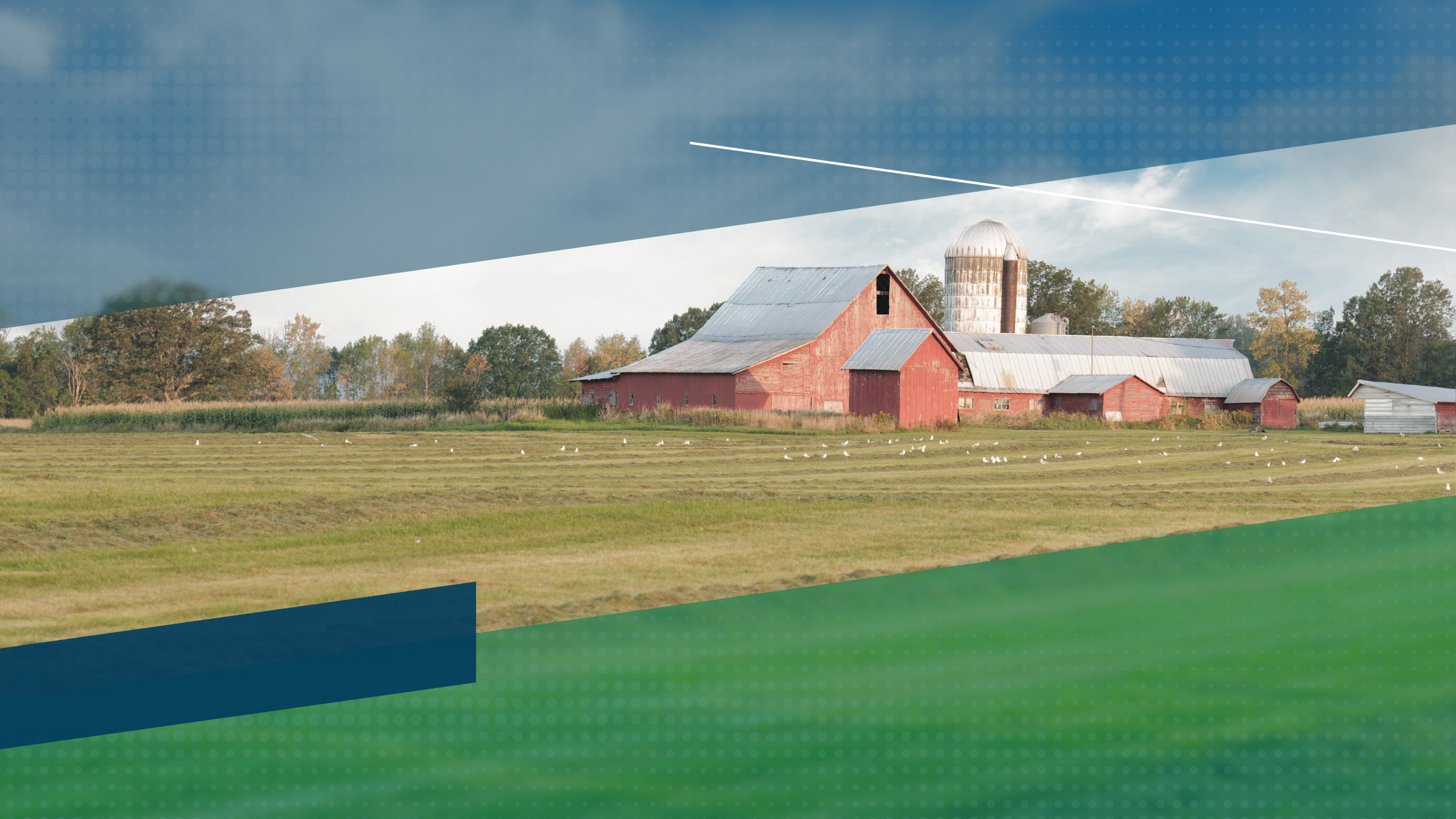Timely moisture, strong prices and higher demand bode well for agricultural producers in 2007, according to the Minneapolis Fed’s first-quarter (April 2007) agricultural credit conditions survey. Respondents indicated increases in income, capital purchases and household spending. In addition, loan repayments and renewals held steady across most of the district. “Higher grain and cattle prices will increase incomes,” commented a lender from South Dakota. The outlook for the second quarter of 2007 is upbeat, as bankers expect the agricultural customer’s financial picture to improve.
Farm income, household spending and capital investment
Agricultural profits increased during the first quarter across most of the district. Lenders are generally reporting that due to high crop prices, farmers are faring better than ranchers. Montana lenders reported sagging profits. Nearly 70 percent of the Minnesota lenders reported higher income for farm customers, while 42 percent of the Montana lenders reported lower farm income. Ethanol plants in the eastern portion of the district are aiding farm profits. “Ethanol plants will have an impact on grain prices and marketing practices of farmers into the future,” noted a South Dakota lender. However, due to high corn prices and lower oil prices, 29 percent of the Minnesota lenders expect the ethanol building boom to slow.
Overall capital investment and household spending increased. Most parts of the district had robust growth in capital investment, with 58 percent of the Minnesota lenders and 38 percent of the South Dakota lenders reporting increases. However, weakness was evident in Montana, where half of the lenders reported decreased capital spending. Household spending showed the same pattern, with 53 percent of the Minnesota lenders and 41 percent of the South Dakota lenders reporting increases and a quarter of the Montana respondents reporting decreases.

Loan repayments and renewals
Both loan repayments and loan extensions increased, which is unusual. This may be due to diverse conditions across agricultural sectors and geographic areas. “Higher feed/corn prices have lowered the value of feeder cattle for cow-calf operations,” a South Dakota lender observed. Twenty-three percent of the respondents saw an increase in the rate of loan repayment. “With high grain prices, ag producers have an opportunity to reduce leverage and improve debt service capacity,” reported another South Dakota lender. However, in Montana, three-quarters of lenders reported no change and 17 percent reported decreased repayments. Nearly a third of North Dakota lenders reported decreased repayment rates. A quarter of respondents reported increases in loan renewals and extensions. The biggest increases were reported in the Dakotas.
Demand for loans, required collateral and interest rates
“We are experiencing excellent loan growth,” wrote a respondent from Minnesota, reflecting the views of many lenders. A third of the respondents indicated increased loan demand during the first quarter, while only 16 percent saw reduced loan demand. Loan demand was strongest in the Dakotas and weakest in Wisconsin. One area of loan demand may be in the changing locations of livestock production. “Large hog production facilities are expanding their operations,” said a lender from North Dakota. Interest rates were little changed during the first quarter relative to the fourth quarter of 2006. Meanwhile, only 6 percent of lenders reported increased collateral requirements, with the balance reporting no change. A mere 2 percent of respondents indicated that loans were refused due to a shortage of funds.
Land values
“High commodity and relatively strong livestock prices along with ethanol plant construction in the county have fueled a real competition for land,” reported a lender from Minnesota. Based on the responses from agricultural lenders, average nonirrigated farmland and ranchland values increased 13 percent and 17 percent, respectively, from a year ago. “The 1031 exchange tax program has in effect taken the family farm out of the production … game. We are seeing investors buying land for about three times the production value,” commented a South Dakota lender. (Land prices can vary significantly, not only from state to state, but also from parcel to parcel. For more detailed information on agricultural prices, see the Minnesota Land Economics Web site.)
Outlook
The outlook for second-quarter financial conditions is upbeat. Lenders expect their agricultural customers’ income, capital purchases and household spending to increase. In addition, loan demand is expected to increase as producers expand. “With higher prices, many farmers have contracted 25 to 50 percent of the new crop. This makes a much better outlook for the 2007 crop year,” reported a Minnesota lender.
Appendices: State Fact Sheet | State Fact Sheet-Outlook




